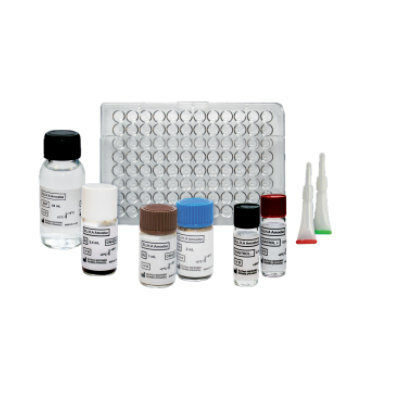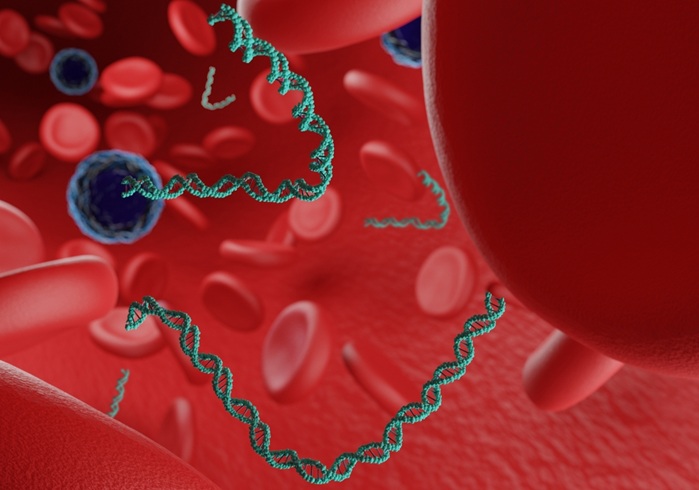Serial Procalcitonin Measurements Utilized in Hospitalized Community-Acquired Pneumonia
|
By LabMedica International staff writers Posted on 19 Mar 2020 |
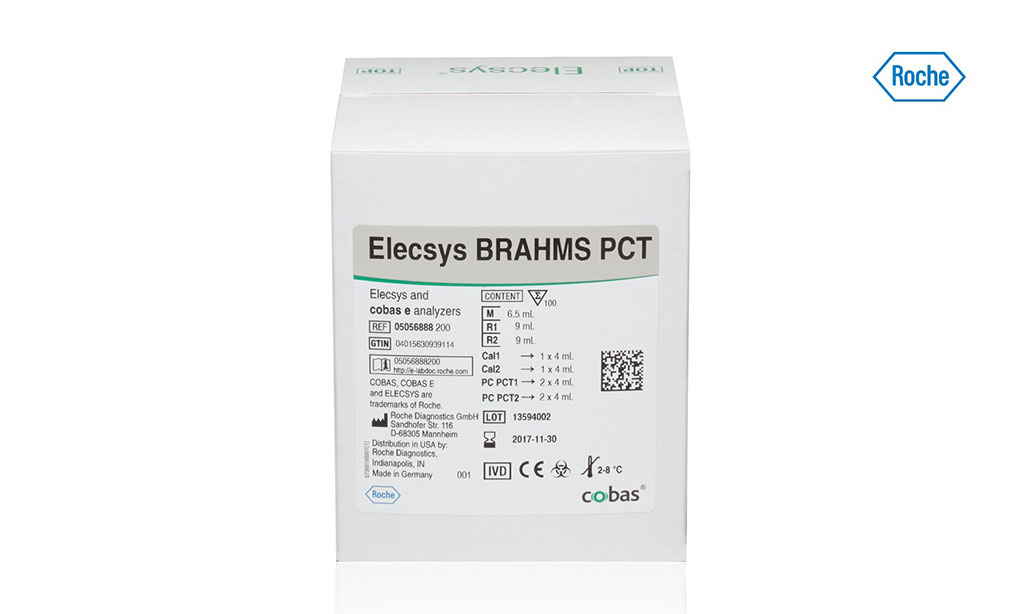
Image: The Elecsys BRAHMS PCT (procalcitonin) assay is intended for the mortality risk assessment and management of sepsis patients. Featuring a short duration time of only 18 minutes, the Elecsys BRAHMS PCT assay can be easily added to any of the automated cobas immunoanalyzer platforms (Photo courtesy of Roche Diagnostics).
Community-acquired pneumonia (CAP) refers to pneumonia (any of several lung diseases) contracted by a person with little contact with the healthcare system. CAP, the most common type of pneumonia, is a leading cause of illness and death worldwide. Its causes include bacteria, viruses, fungi and parasites.
To improve the prognosis of CAP patients, assessment of its severity is important for selecting appropriate antimicrobial agents and site of treatment, whether as an outpatient or in hospital, including a general ward or intensive care unit (ICU). Either CURB-65 or the Pneumonia Severity Index (PSI) is often used to assess the severity of pneumonia because they have been validated to correlate well with prognosis.
Scientists at the Kurashiki Central Hospital (Okayama, Japan) investigated the usefulness of serial procalcitonin (PCT) measurements for predicting the prognosis and treatment efficacy for hospitalized CAP patients. This prospective, multicenter, cohort study enrolled consecutive CAP patients who were hospitalized at 10 hospitals in western Japan from September 2013 to September 2016.
Sputum and blood for cultures and blood for measuring serum antibodies were collected on admission to detect the causative pathogens of CAP. In all hospitals, the serum PCT levels were measured by the Elecsys BRAHMS PCT automated immunoassay (Roche Diagnostics GmbH, Mannheim, Germany), which had a detection limit of 0.02 ng/mL.
The investigators reported that in the 710 patients, 366 microorganisms were identified. The most common causative microorganism was Streptococcus pneumoniae (22.2%), followed by Haemophilus influenzae (11.1%). Both PCT and CRP values on day 1 (D1), D3, and D7 were significantly higher in non-survivors than in survivors. From D1 to D3, the non-survivor group showed increased PCT (PCT D3/D1 > 1) more often than the survivor group, whereas the increase of CRP (CRP D3/D1 >1) was not significantly different. Compared with patients with treatment success, patients with early treatment failure showed significantly higher values of PCT D1, D3, and CRP D3, but similar CRP D1 values.
The authors concluded that to assess prognosis and treatment efficacy in CAP, it would be ideal to measure PCT serially, not only on admission, but again on day 3. If the values of PCT increase from admission to day 3, the antibiotics may need to be changed, or the patients who have deteriorated may require close monitoring. The study was published on March 1, 2020 in the International Journal of Infectious Diseases.
Related Links:
Kurashiki Central Hospital
Roche Diagnostics GmbH
To improve the prognosis of CAP patients, assessment of its severity is important for selecting appropriate antimicrobial agents and site of treatment, whether as an outpatient or in hospital, including a general ward or intensive care unit (ICU). Either CURB-65 or the Pneumonia Severity Index (PSI) is often used to assess the severity of pneumonia because they have been validated to correlate well with prognosis.
Scientists at the Kurashiki Central Hospital (Okayama, Japan) investigated the usefulness of serial procalcitonin (PCT) measurements for predicting the prognosis and treatment efficacy for hospitalized CAP patients. This prospective, multicenter, cohort study enrolled consecutive CAP patients who were hospitalized at 10 hospitals in western Japan from September 2013 to September 2016.
Sputum and blood for cultures and blood for measuring serum antibodies were collected on admission to detect the causative pathogens of CAP. In all hospitals, the serum PCT levels were measured by the Elecsys BRAHMS PCT automated immunoassay (Roche Diagnostics GmbH, Mannheim, Germany), which had a detection limit of 0.02 ng/mL.
The investigators reported that in the 710 patients, 366 microorganisms were identified. The most common causative microorganism was Streptococcus pneumoniae (22.2%), followed by Haemophilus influenzae (11.1%). Both PCT and CRP values on day 1 (D1), D3, and D7 were significantly higher in non-survivors than in survivors. From D1 to D3, the non-survivor group showed increased PCT (PCT D3/D1 > 1) more often than the survivor group, whereas the increase of CRP (CRP D3/D1 >1) was not significantly different. Compared with patients with treatment success, patients with early treatment failure showed significantly higher values of PCT D1, D3, and CRP D3, but similar CRP D1 values.
The authors concluded that to assess prognosis and treatment efficacy in CAP, it would be ideal to measure PCT serially, not only on admission, but again on day 3. If the values of PCT increase from admission to day 3, the antibiotics may need to be changed, or the patients who have deteriorated may require close monitoring. The study was published on March 1, 2020 in the International Journal of Infectious Diseases.
Related Links:
Kurashiki Central Hospital
Roche Diagnostics GmbH
Latest Clinical Chem. News
- Mass Spectrometry Detects Bacteria Without Time-Consuming Isolation and Multiplication
- First Comprehensive Syphilis Test to Definitively Diagnose Active Infection In 10 Minutes
- Mass Spectrometry-Based Monitoring Technique to Predict and Identify Early Myeloma Relapse
- ‘Brilliantly Luminous’ Nanoscale Chemical Tool to Improve Disease Detection
- Low-Cost Portable Screening Test to Transform Kidney Disease Detection
- New Method Uses Pulsed Infrared Light to Find Cancer's 'Fingerprints' In Blood Plasma
- Carbon Nanotubes Help Build Highly Accurate Sensors for Continuous Health Monitoring
- Paper-Based Device Boosts HIV Test Accuracy from Dried Blood Samples
- AI-Powered Raman Spectroscopy Method Enables Rapid Drug Detection in Blood
- Novel LC-MS/MS Assay Detects Low Creatinine in Sweat and Saliva
- Biosensing Technology Breakthrough Paves Way for New Methods of Early Disease Detection
- New Saliva Test Rapidly Identifies Paracetamol Overdose
- POC Saliva Testing Device Predicts Heart Failure in 15 Minutes

- Screening Tool Detects Multiple Health Conditions from Single Blood Drop
- Integrated Chemistry and Immunoassay Analyzer with Extensive Assay Menu Offers Flexibility, Scalability and Data Commutability
- Rapid Drug Test to Improve Treatment for Patients Presenting to Hospital
Channels
Clinical Chemistry
view channel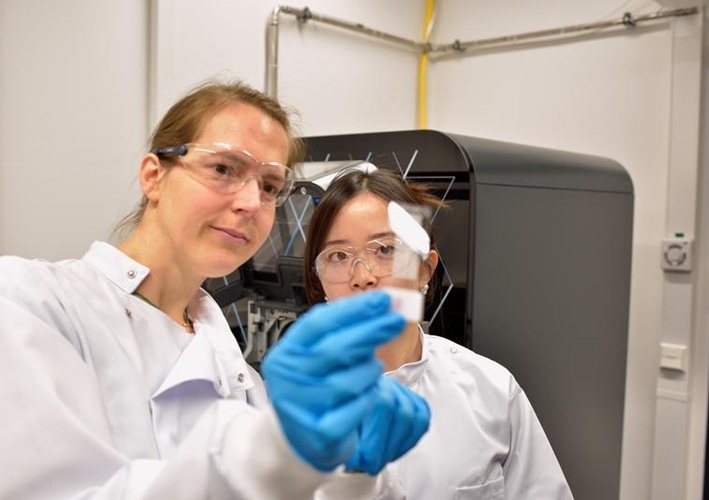
Mass Spectrometry Detects Bacteria Without Time-Consuming Isolation and Multiplication
Speed and accuracy are essential when diagnosing diseases. Traditionally, diagnosing bacterial infections involves the labor-intensive process of isolating pathogens and cultivating bacterial cultures,... Read more
First Comprehensive Syphilis Test to Definitively Diagnose Active Infection In 10 Minutes
In the United States, syphilis cases have surged by nearly 80% from 2018 to 2023, with 209,253 cases recorded in the most recent year of data. Syphilis, which can be transmitted sexually or from mother... Read more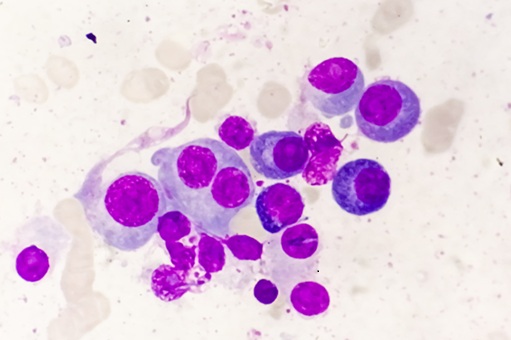
Mass Spectrometry-Based Monitoring Technique to Predict and Identify Early Myeloma Relapse
Myeloma, a type of cancer that affects the bone marrow, is currently incurable, though many patients can live for over 10 years after diagnosis. However, around 1 in 5 individuals with myeloma have a high-risk... Read moreMolecular Diagnostics
view channel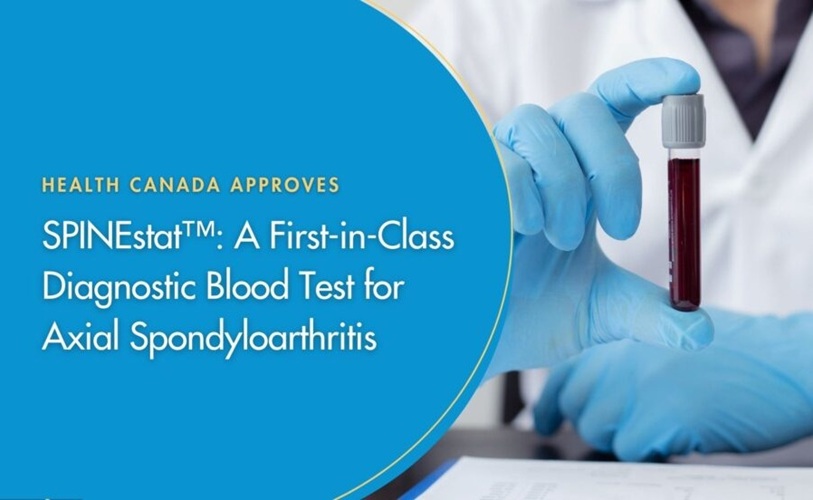
First-in-Class Diagnostic Blood Test Detects Axial Spondyloarthritis
Axial spondyloarthritis (axSpA) is a chronic inflammatory autoimmune condition that typically affects individuals during their most productive years, with symptoms often emerging before the age of 45.... Read more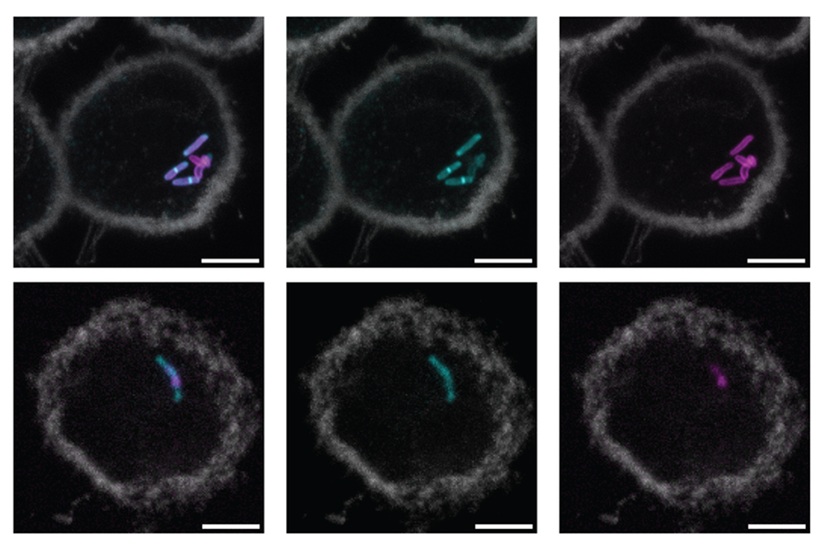
New Molecular Label to Help Develop Simpler and Faster Tuberculosis Tests
Tuberculosis (TB), the deadliest infectious disease globally, is responsible for infecting an estimated 10 million people each year and causing over 1 million deaths annually. While chest X-rays and molecular... Read more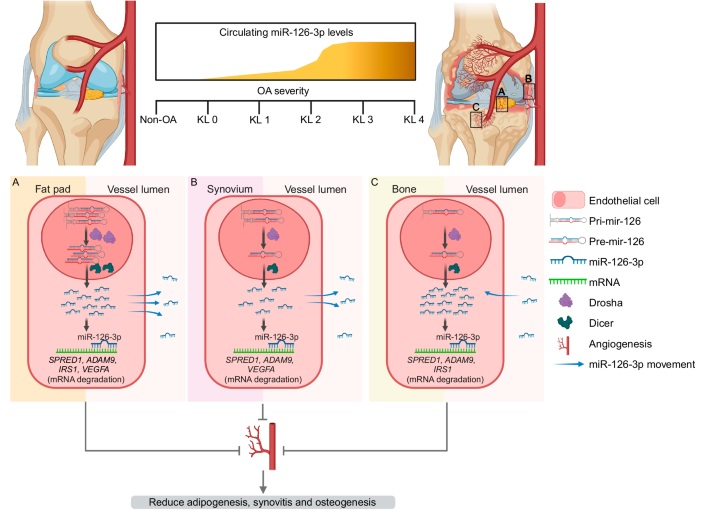
Biomarker Discovery Paves Way for Blood Tests to Detect and Treat Osteoarthritis
The number of individuals affected by osteoarthritis is projected to exceed 1 billion by 2050. The primary risk factor for this common, often painful chronic joint condition is aging, and, like aging itself,... Read moreHematology
view channel
New Scoring System Predicts Risk of Developing Cancer from Common Blood Disorder
Clonal cytopenia of undetermined significance (CCUS) is a blood disorder commonly found in older adults, characterized by mutations in blood cells and a low blood count, but without any obvious cause or... Read more
Non-Invasive Prenatal Test for Fetal RhD Status Demonstrates 100% Accuracy
In the United States, approximately 15% of pregnant individuals are RhD-negative. However, in about 40% of these cases, the fetus is also RhD-negative, making the administration of RhoGAM unnecessary.... Read moreImmunology
view channel
Stem Cell Test Predicts Treatment Outcome for Patients with Platinum-Resistant Ovarian Cancer
Epithelial ovarian cancer frequently responds to chemotherapy initially, but eventually, the tumor develops resistance to the therapy, leading to regrowth. This resistance is partially due to the activation... Read more
Machine Learning-Enabled Blood Test Predicts Immunotherapy Response in Lymphoma Patients
Chimeric antigen receptor (CAR) T-cell therapy has emerged as one of the most promising recent developments in the treatment of blood cancers. However, over half of non-Hodgkin lymphoma (NHL) patients... Read morePathology
view channel
AI-Based Liquid Biopsy Approach to Revolutionize Brain Cancer Detection
Detecting brain cancers remains extremely challenging, with many patients only receiving a diagnosis at later stages after symptoms like headaches, seizures, or cognitive issues appear. Late-stage diagnoses... Read more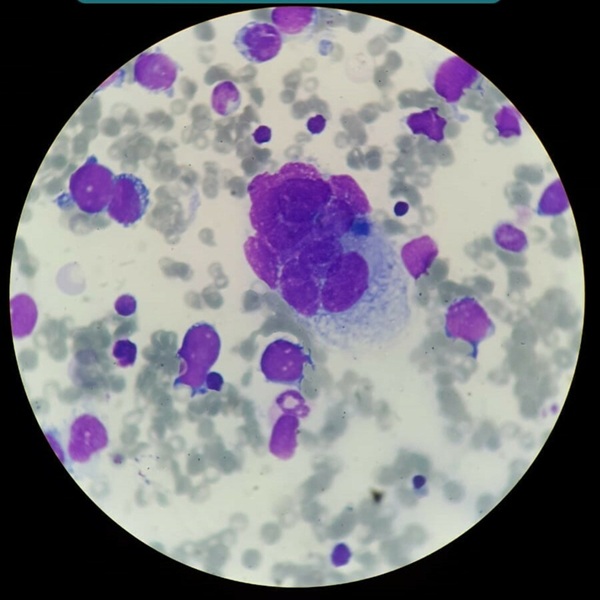
AI-Driven Analysis of Digital Pathology Images to Improve Pediatric Sarcoma Subtyping
Pediatric sarcomas are rare and diverse tumors that can develop in various types of soft tissue, such as muscle, tendons, fat, blood or lymphatic vessels, nerves, or the tissue surrounding joints.... Read more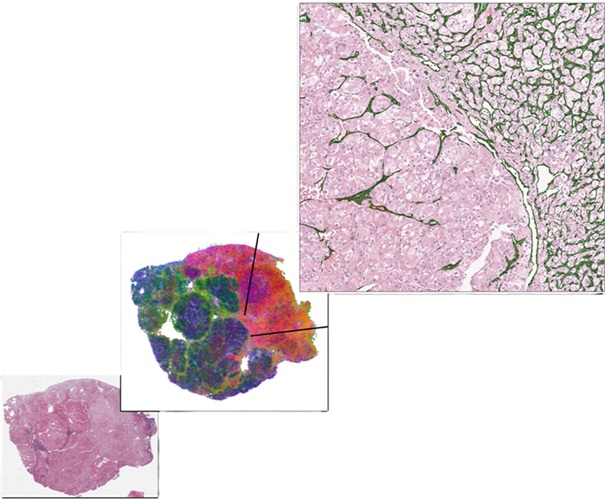
AI-Based Model Predicts Kidney Cancer Therapy Response
Each year, nearly 435,000 individuals are diagnosed with clear cell renal cell carcinoma (ccRCC), making it the most prevalent subtype of kidney cancer. When the disease spreads, anti-angiogenic therapies... Read more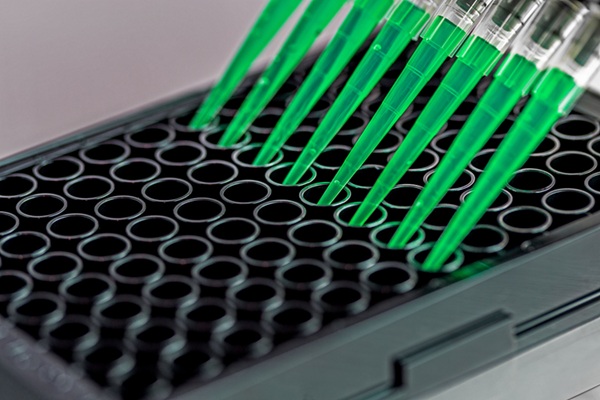
Sensitive and Specific DUB Enzyme Assay Kits Require Minimal Setup Without Substrate Preparation
Ubiquitination and deubiquitination are two important physiological processes in the ubiquitin-proteasome system, responsible for protein degradation in cells. Deubiquitinating (DUB) enzymes contain around... Read moreTechnology
view channel
Advanced Predictive Algorithms Identify Patients Having Undiagnosed Cancer
Two newly developed advanced predictive algorithms leverage a person’s health conditions and basic blood test results to accurately predict the likelihood of having an undiagnosed cancer, including ch... Read more
Light Signature Algorithm to Enable Faster and More Precise Medical Diagnoses
Every material or molecule interacts with light in a unique way, creating a distinct pattern, much like a fingerprint. Optical spectroscopy, which involves shining a laser on a material and observing how... Read more
Disposable Microchip Technology Could Selectively Detect HIV in Whole Blood Samples
As of the end of 2023, approximately 40 million people globally were living with HIV, and around 630,000 individuals died from AIDS-related illnesses that same year. Despite a substantial decline in deaths... Read more
Pain-On-A-Chip Microfluidic Device Determines Types of Chronic Pain from Blood Samples
Chronic pain is a widespread condition that remains difficult to manage, and existing clinical methods for its treatment rely largely on self-reporting, which can be subjective and especially problematic... Read moreIndustry
view channel
Cepheid and Oxford Nanopore Technologies Partner on Advancing Automated Sequencing-Based Solutions
Cepheid (Sunnyvale, CA, USA), a leading molecular diagnostics company, and Oxford Nanopore Technologies (Oxford, UK), the company behind a new generation of sequencing-based molecular analysis technologies,... Read more
Grifols and Tecan’s IBL Collaborate on Advanced Biomarker Panels
Grifols (Barcelona, Spain), one of the world’s leading producers of plasma-derived medicines and innovative diagnostic solutions, is expanding its offer in clinical diagnostics through a strategic partnership... Read more









